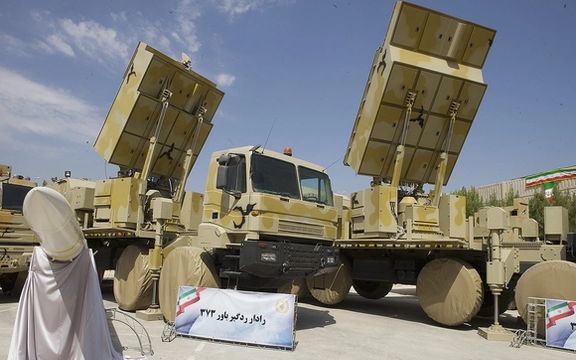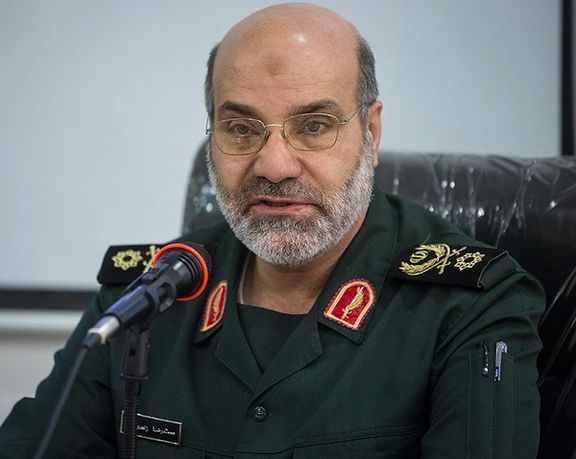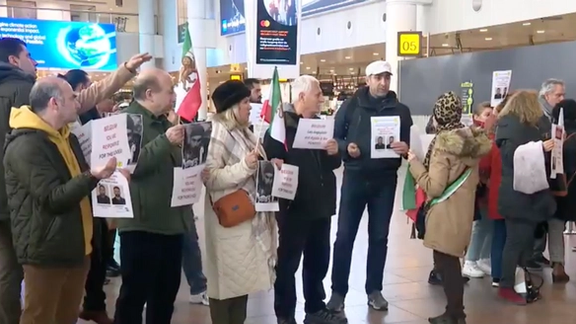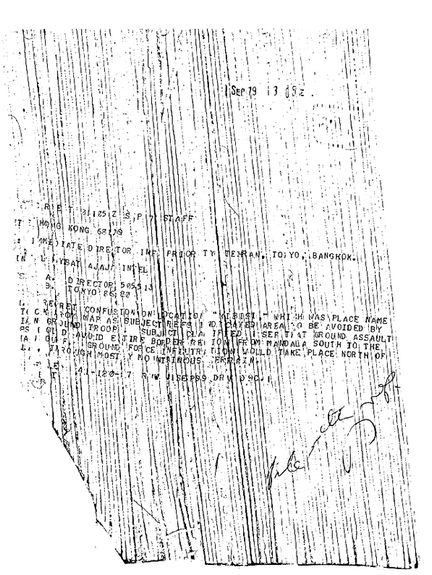US, Israel Kick Off Joint Massive Wargames Amid Iran Tensions

The United States and Israel Monday launched one of their biggest joint military war games, with thousands of forces, a dozen ships, and 142 aircraft, including nuclear-capable bombers.

The United States and Israel Monday launched one of their biggest joint military war games, with thousands of forces, a dozen ships, and 142 aircraft, including nuclear-capable bombers.
A senior US defense official says the "Juniper Oak" exercises, which will run through Friday, are meant to demonstrate integration between the US and Israeli militaries amid growing tensions over Iran's nuclear program.
However, the US official said there would be no mockups of Iranian targets and that the exercises were not oriented around any particular adversary.
"I do think that the scale of the exercise is relevant to a whole range of scenarios, and Iran may draw certain inferences from that," the official acknowledged.
"It's really meant mostly to kick the tires on our ability to do things at this scale with the Israelis against a whole range of different threats."
The maneuvers will include live-fire exercises and involve 6,400 US forces, and Some 450 troops on the ground in Israel, the official underlined.
Drills will take place over large distances, involving land, sea, air and space, the official stated.
The planning for the exercises began only a couple of months ago, before conservative Israeli Prime Minister Benjamin Netanyahu regained top office on December 29.
The official said the drills would show how the United States could effectively surge large numbers of battle-ready forces into the Middle East, even as Washington focuses on Russia's invasion of Ukraine and intensifying competition with China.
Reporting by Reuters

Amid new sanctions by Western countries on Iran’s Revolutionary Guard for human rights violations and other mischiefs, the multi-role organization is ramping up Syria’s air defense system, despite rampant poverty in Iran.
According to a report by the Newsweek earlier in the month, the Islamic Republic has invested tens of millions of dollars from the country's public budget for the deployment of a comprehensive aerial defense network in Syria.
Newsweek cited an unnamed intelligence source from a nation allied with the United States that the IRGC over the past two years has been “promoting the deployment of aerial defense capabilities on its behalf in Syria at a cost of tens of millions of dollars in order to deal with the Israeli airstrikes.”
Iran has played a major role in the Syrian conflict from 2011, by sending fighters and weapons to assist the Bashar al-Assad’s forces and entrench itself near Israel.
According to the source, IRGC Aerospace Force deputy commander Brig. Gen. Fereydoun Mohammadi Saghaei, is leading the air defense project.
Information obtained by Iran International revealed that the deployment of the air defense equipment was previously being carried out under the supervision of an IRGC’s Quds Force senior commander Javad Ghaffari, who was expelled from Syria last fall apparently over differences with the Russians, and now the mission is overseen by Mohammad Reza Zahedi, another Quds Force officer.

The team includes secret logistics agents who are familiar with the sensitive equipment in the field of air defense, such as Gholam Hassan Hosseini. Dozens of Syrian forces work under Hosseini. Previously, the Iranian agent coordinating the transfer of military equipment to Syria was Alireza Rezvani, whose alias is Yaser. Rezvani returned to Iran in fear for his life after his identity was revealed. Two members of Lebanese group Hezbollah are also involved in the project: Abbas Muhammad Al Dabs (left) and Muhammad Mahmoud Zalzli. Intelli Times earlier published diagrams of their faces.
"The promotion of these capabilities is carried out as a project shared with the Syrian army and possibly even with the aim of enabling independent Iranian operation of the aerial defense systems from within parts of Syria," the source told Newsweek, adding that “the Iranians assisted the Syrians in upgrading their radar array, designed to aid in detection and prevention of Israeli attacks—mainly against the Iranian establishment in Syria."
The weapons involved in the effort include Iran's Sayyad (Hunter) 4B solid-propellant missile, which was unveiled in November 2022. The projectile was paired with the Bavar-373 surface-to-air missile system and said to have a range of about 300 kilometers with a radar range of about 450 kilometers. It is reported that the system is capable of shooting down fifth-generation fighter aircraft, such as Israel’s advanced F-35I fighters.
Iranian officials claimed greater capabilities for the domestically produced system, calling it more advanced than the US-made Patriot surface-to-air missile system and Terminal High Altitude Area Defense (THAAD) anti-missile system as well as the Russia-built S-300 surface-to-air missile system.
The report mentioned several recent airstrikes in Syria that targeted the new Iranian air defense deployment efforts, including strikes in Palmyra and Tartus in October 2021, Latakia in December 2021, Damascus in March 2022, Tartus in July 2022, and two strikes in Homs in November and December 2022.
The source also said that at least 10 Iranians involved in the air defense efforts in Syria had been killed by Israel in recent years. The Islamic Republic has acknowledged some of these casualties, such as IRGC officers Ehsan Karbalaipour and Morteza Saeednejad, identified by various reports as air defense engineers who were killed in Damascus last March, and Col. Davoud Jafari, an adviser from the IRGC’s aerospace division who died by what Iran said was a roadside bomb near the capital Damascus in November.
Earlier in January, Israeli air strikes targeting Iran-linked assets in Syria hit the Damascus International Airport. Missiles also hit targets in the south of Damascus. Earlier, two regional intelligence sources said the strikes had hit an outpost near the airport of the IRGC’s Quds Force -- a division primarily responsible for extraterritorial military and clandestine operations – and its affiliated militias.
Earlier reports had said that Syria and Iran have been deploying the new air defense systems since late in November around Damascus. There were reports that the new systems were built by Korean and Chinese companies and provided by Iran as part of agreements reached between Damascus and Tehran.

A group of people have held a gathering in Zaventem airport in Brussels on Monday to stop the expulsion of two Iranian refugees by the Belgian government.
The demonstrators held the gathering to prevent Mohammadreza Hamian and Alireza Hesam, both 22, to be sent home after their asylum application was rejected in December despite their attempts to gather as many documents as possible.
The men had arrived in Belgium after taking part in anti-government protests against the clerical rulers in Iran. However, they now fear for their lives.
“We have been in a closed reception center for 80 days, and no one hears our voice,” one of them told RTBF, the Belgian Radio-television of the French Community.
"The whole world knows what is happening in Iran for a few months. We were in the streets asking for freedom. The whole world knows what we risk if we go back to Iran ," they told RTBF from the center.
“Returning to Iran equals death, like what happened to many other young people like us in Iran ,” they say.
A Monday flight will take them to Turkey, and then they might be sent back to Iran.
Ali Amerian, the lawyer of these two asylum seekers, and Darya Safaei, an Iranian member of the Belgian Parliament, have asked the government to stop their deportation.
Nicole de Moor, the Secretary of State for Asylum and Migration said “asylum is really reserved for those who fear individual persecution, which was not the case for these two people, according to the independent analysis of our asylum authorities.”

Iran’s government pumped $305 million into the currency market over two days, after the currency, rial, fell to a historic low of 450,000 against the US dollar.
The Central Bank of Iran announced that the dollars were made available on Saturday and Sunday at a special currency scheme known as NIMA, which is set up for foreign currencies to be sold at a lower rate by exporters and for importers to buy what they need at the same low rate to finance their purchases from other countries.
The system was set up to make imports cheaper and control rising prices, after US sanctions in 2018 practically devalued Iran’s currency and led to very high inflation. The rial has lost value 12-fold in five years.
The injection of $305 million into the NIMA system indicates that there are not enough dollars from exports and the government had to satisfy demand.
However, the US dollar is set at 285,000 to the dollar in the special government scheme versus the free market where it is traded at about 450,000. The discrepancy between the two breeds corruption, as well-connected individuals and companies can buy cheap dollars through NIMA and instead of using it to finance imports, sell it on the currency market.
Numerous cases of such corruption have been revealed since 2018, when cheap dollars obtained from the government to import essential goods were used to import thousands of luxury cars, or simply nothing.
The government also regularly sells dollar through the free market to currency dealers to support the beleaguered rial. Usually, these interventions have a limited and temporary effect.

Thirty female political detainees in Iran’s notorious Evin prison in Tehran, have signed an open letter demanding an end to the "unjust sentences for prisoners" and their execution.
“We, the political and ideological prisoners in the women’s ward of Evin Prison, demand an end to the execution of protesters and an end to unjust sentences of prisoners in Iran,” they say in the petition.
The women inmates including French-Iranian academic Fariba Adelkhah, the daughter of a former president Faezeh Hashemi and political activist Sepideh Qolian say their group of 30 prisoners have been “sentenced to a total of 124 years in prison through unfair and non-transparent procedures.”
Despite coming from different religious and political backgrounds, “we have come together to say ‘no’ to execution. We defend people’s right to live in justice,” reads the petition.
The letter is published in a situation that according to the Norway-based Iran Human Rights Organization at least 109 protesters arrested since mid-September are at risk of imminent execution or death sentence.
This is apart from the four protestors that the Islamic Republic has already executed on charges of "corruption on earth and war against God," without access to a lawyer and a fair trial.
In more than four months, over 500 citizens have been killed by government agents, dozens of whom were children. In the meantime, about 20,000 protesters have also been arrested.

Islamic Republic’s education minister says parts of the documents obtained during the US embassy takeover in 1979 will be included in school textbooks as of next year.
Islamic Republic’s education minister says parts of the documents obtained during the US embassy takeover in 1979 will be included in school textbooks as of next year.
Yousef Nouri said Sunday that the move was done upon a call by Supreme Leader Ali Khamenei and the materials will be included in textbooks in all levels from the elementary school to the end of high school according to the level of understanding of the students.
He said that Khamenei urged the measure in a meeting with a group of students on November 2, 2022. Schoolbooks in Iran carry a heavy load of the regime ideology, with history re-written to fit its narrative, similar to what Communist regimes did in the 20th century.

According to Fars news agency, affiliated with the Revolutionary Guards, after the occupation of the US embassy in Tehran by revolutionary students, they “found documents there that showed American conspiracies against the Iranian nation," adding that the data extracted from the documents are compiled in 70 to 80 volumes of books.
According to an article published by The Washington Post in January 1982, hundreds of highly sensitive documents were captured and reconstructed after the embassy takeover. There were other documents that reportedly have not been deciphered or have been withheld from public consumption. “Although those published do not support the more egregious conspiracy theories of the militants, they have been used in an intensive campaign to arouse further distrust of the United States.”

The published documents, most of which have been authenticated by US sources, detail the US estimates of the regime of the late shah, Mohammad Reza Pahlavi, the forces which toppled him and the struggle to preserve American influence in Iran.
An article by the New York Times on July 10, 1986, said the documents were published under the title “Documents From the Espionage Den," the name the Islamic Republic uses for the US embassy. The books are sold openly in Tehran bookshops and included photocopies of the original telexes, mailgrams and typed letters from the embassy, classified reports, commentaries from the "students," and their complete translations into Persian.
Among the papers were shredded secret documents pieced back together by the attackers that detailed attempts of the Central Intelligence Agency to recruit high-level Iranian officials, ayatollahs, foreign journalists and diplomats as well as other CIA contacts either as paid or "unwitting” agents in the months after the revolution. “The documents shed light on the CIA's apparently unsuccessful attempt to recruit the former Iranian President Abolhassan Bani-Sadr, in the months just before the embassy takeover, when he was a member of the ruling Revolutionary Council and head of the Central Bank," said the article.
Some of the documents suggested that some of the members of the embassy's staff had been working with the CIA. Later, the CIA confirmed its role and that of MI6 in Operation Ajax -- the 1953 Iranian coup d'état that overthrew Prime Minister Mohammad Mosaddegh in favor of strengthening the monarchical rule of the Shah, Mohammad Reza Pahlavi.
The regime is expected to embed a heavy dose of its anti-American propaganda in the textbooks claiming it is substantiated by the embassy documents.
Earlier in the month, the Islamic Republic announced its intention to change the content of textbooks in foreign language schools after criticism by Khamenei. Head of Non-Governmental Schools and Centers Ahmad Mahmoudzadeh told ILNA Sunday that “We will have a call to produce content of language books for schools, which will be implemented in line with the order of the Supreme Leader.” "Language books that have nothing to do with our culture will be discarded," he added. Changing the content of textbooks based on the government's propaganda policies has been implemented in the last few years upon the order of Supreme Leader Ali Khamenei. However, this is the first time that these changes will be applied to the language teaching books of private institutes.
In August, the education minister said that 200 schoolbooks of the country’s education system will be revised as ordered by the Supreme Leader.